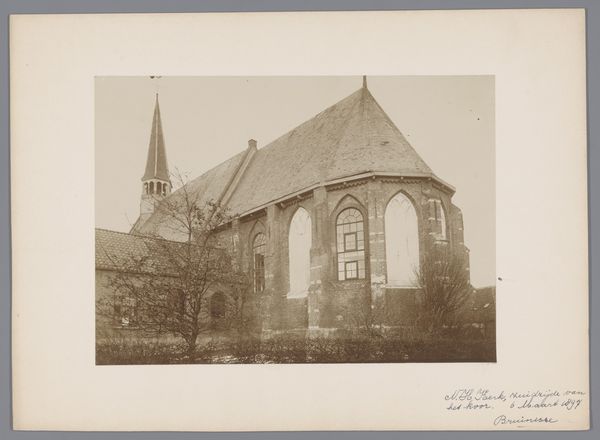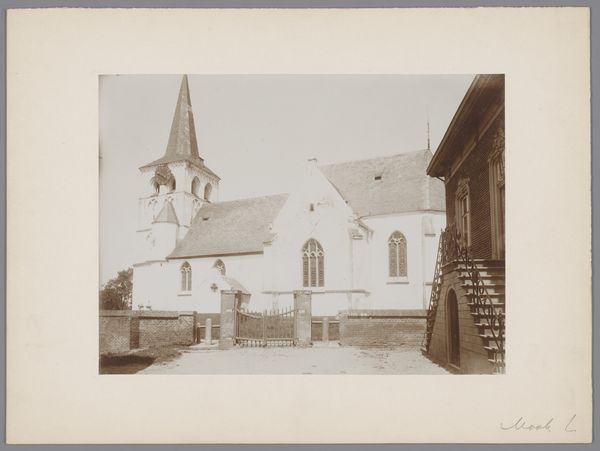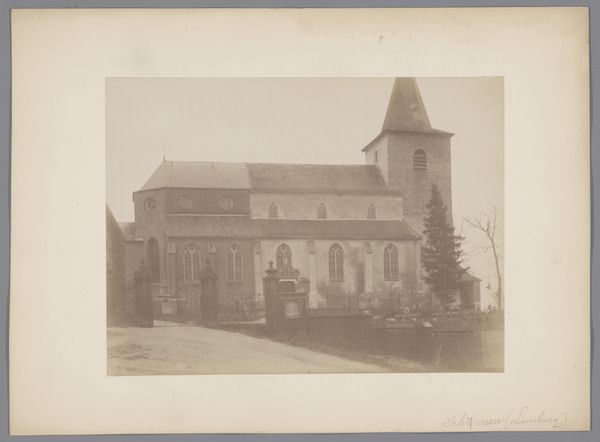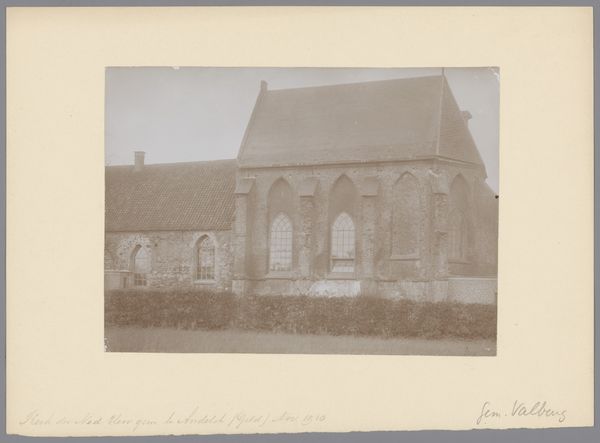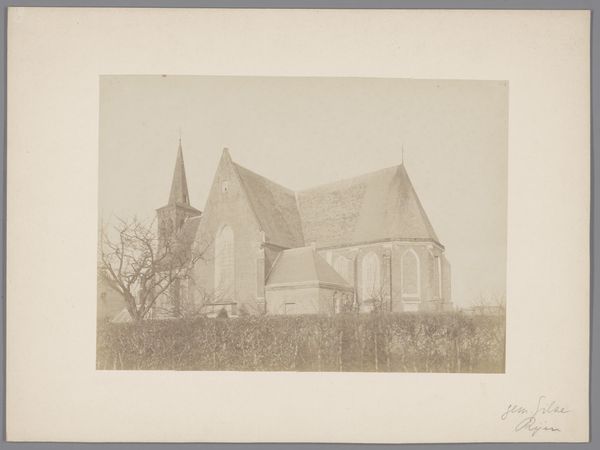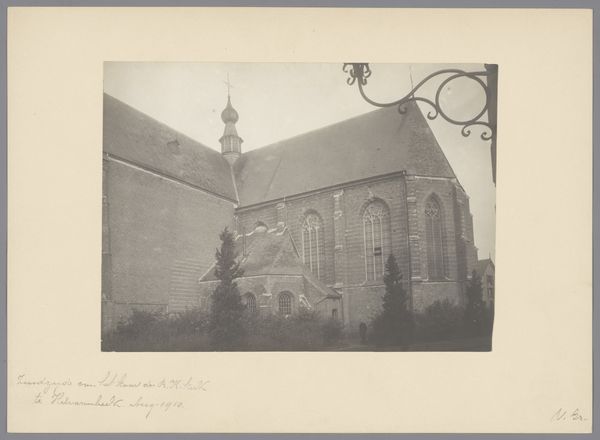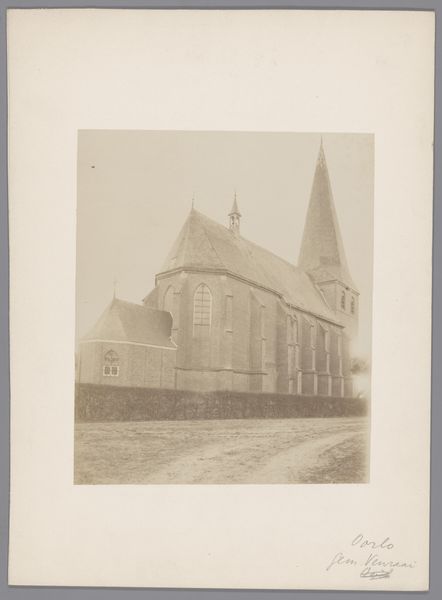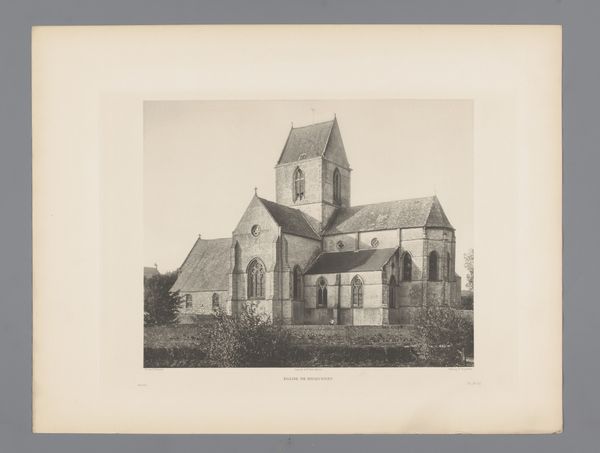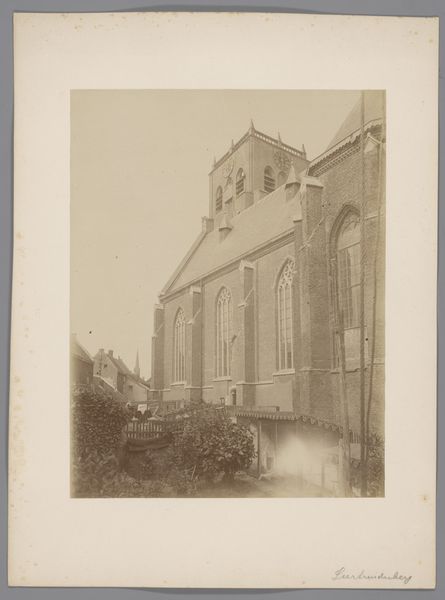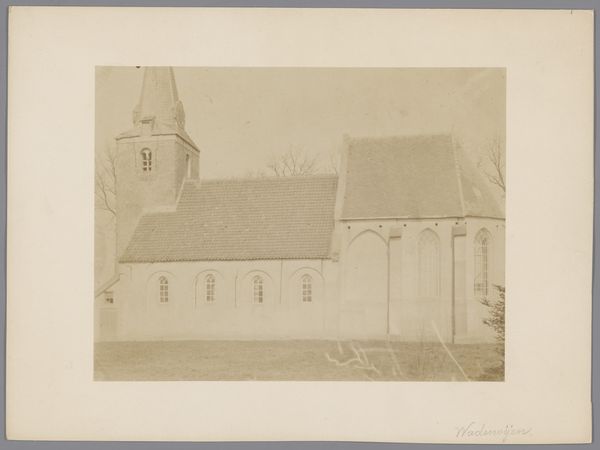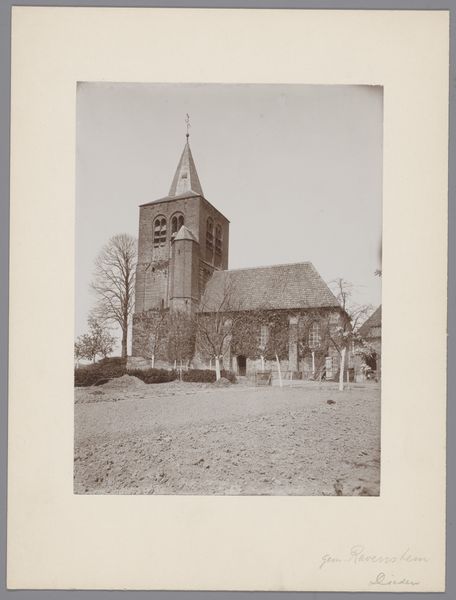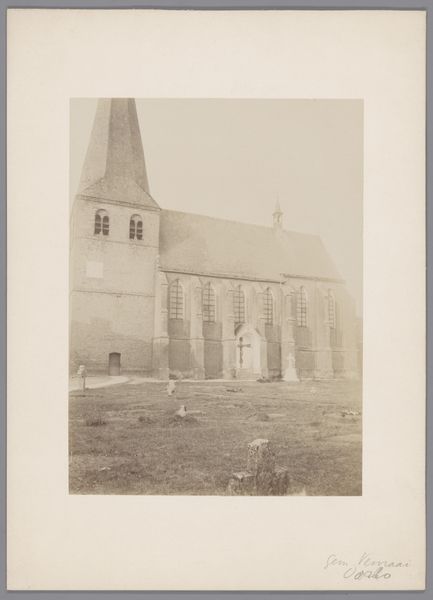
Dimensions: height 160 mm, width 223 mm
Copyright: Rijks Museum: Open Domain
Editor: This is an interesting gelatin silver print from 1910, titled “Gezicht op de Hervormde Kerk van Andelst,” by an anonymous photographer working for Monumentenzorg. I find it serene, almost austere. What aspects of this photograph capture your attention most? Curator: The focus on materiality is key here. Consider the gelatine silver process: coating paper, chemical reactions under light… this determined the aesthetic and its reproducibility. Now think about *why* Monumentenzorg commissioned this. What social function did this church serve in 1910? Preservation isn't just about aesthetics; it's about controlling the narrative around labor, religion, and communal life, mediated through this reproducible image. Editor: I hadn't considered the intent behind the photograph itself! So, the choice of the silver gelatin print, being easily reproducible, helped further a message. Curator: Precisely! The photograph flattens lived experience into a single object—a representational object meant for widespread consumption. I'm more interested in what *isn’t* captured here: The individual hands building the church, the social dynamic influencing design…These unseen processes built it, and, later, they determine its preservation as representation in photo form. Who benefitted from these churches? Whose labour helped building them? Editor: So, you're drawing attention to what's absent—the socio-economic realities – which is often masked when focusing purely on the image’s subject. This makes me consider more about this anonymous person making this work as a civil servant too. Thanks for sharing such fresh ideas with me. Curator: And I found a renewed appreciation by looking into Monumentenzorg through your open perspective.
Comments
No comments
Be the first to comment and join the conversation on the ultimate creative platform.
